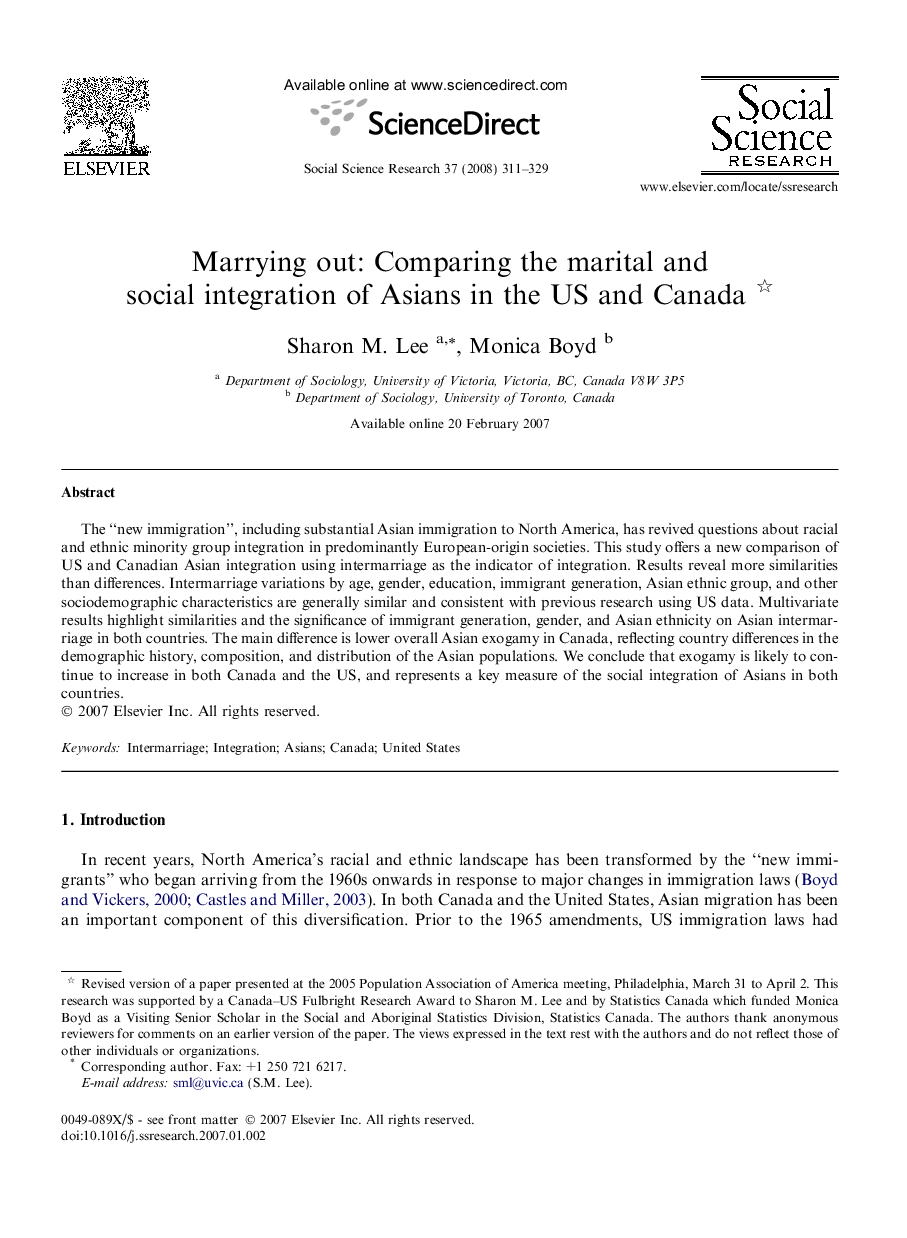| Article ID | Journal | Published Year | Pages | File Type |
|---|---|---|---|---|
| 956320 | Social Science Research | 2008 | 19 Pages |
The “new immigration”, including substantial Asian immigration to North America, has revived questions about racial and ethnic minority group integration in predominantly European-origin societies. This study offers a new comparison of US and Canadian Asian integration using intermarriage as the indicator of integration. Results reveal more similarities than differences. Intermarriage variations by age, gender, education, immigrant generation, Asian ethnic group, and other sociodemographic characteristics are generally similar and consistent with previous research using US data. Multivariate results highlight similarities and the significance of immigrant generation, gender, and Asian ethnicity on Asian intermarriage in both countries. The main difference is lower overall Asian exogamy in Canada, reflecting country differences in the demographic history, composition, and distribution of the Asian populations. We conclude that exogamy is likely to continue to increase in both Canada and the US, and represents a key measure of the social integration of Asians in both countries.
